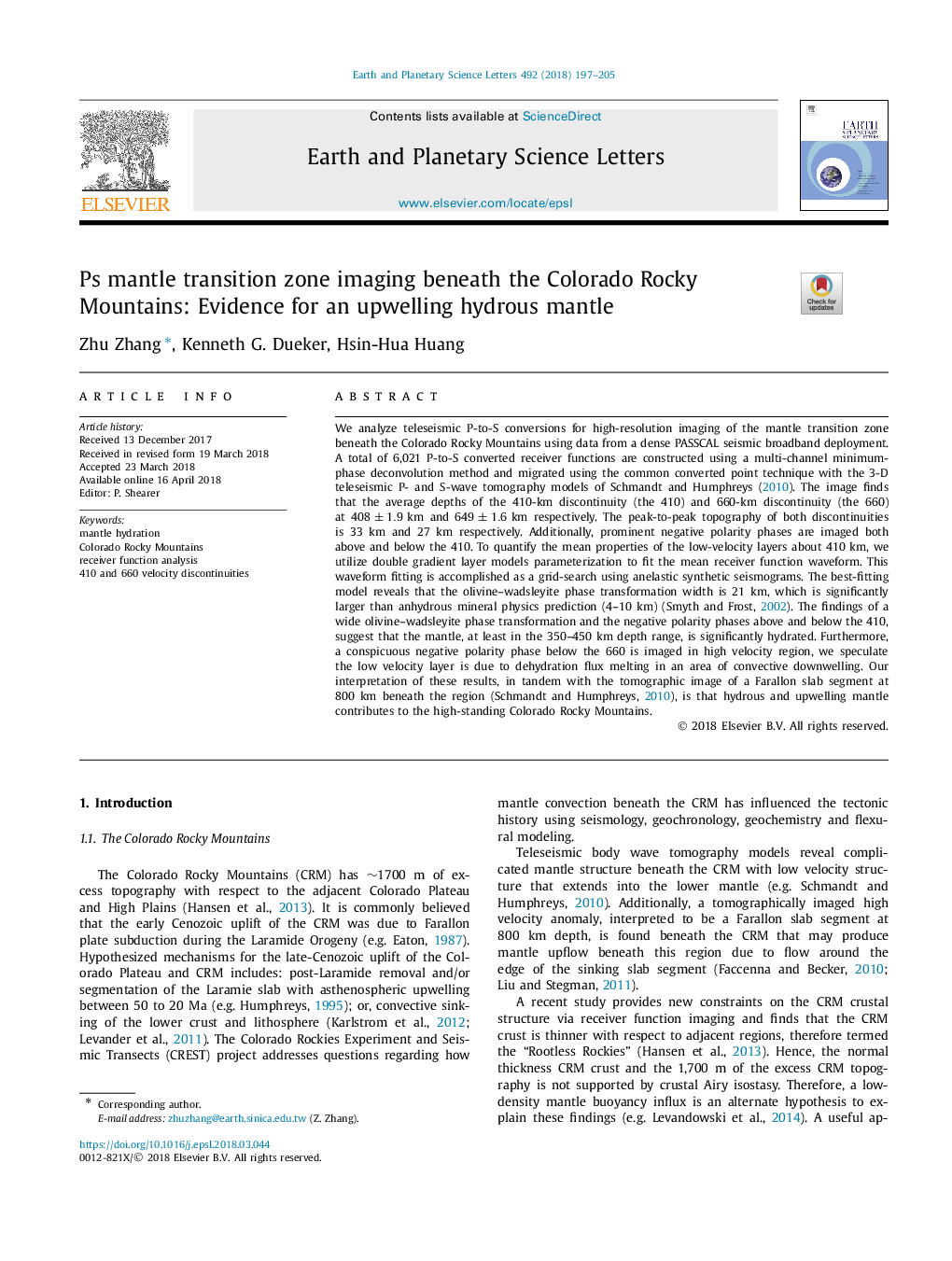| کد مقاله | کد نشریه | سال انتشار | مقاله انگلیسی | نسخه تمام متن |
|---|---|---|---|---|
| 8906915 | 1634664 | 2018 | 9 صفحه PDF | دانلود رایگان |
عنوان انگلیسی مقاله ISI
Ps mantle transition zone imaging beneath the Colorado Rocky Mountains: Evidence for an upwelling hydrous mantle
ترجمه فارسی عنوان
تصویربرداری منطقه ای گذرگاه طاقچه زیر زیر کوه های کلرادو راکی: شواهدی برای گوشته ای آبی
دانلود مقاله + سفارش ترجمه
دانلود مقاله ISI انگلیسی
رایگان برای ایرانیان
کلمات کلیدی
هیدراسیون گوشته کوههای سنگاپور کلرادو، تجزیه و تحلیل تابع گیرنده، اختلالات سرعت 410 و 660،
موضوعات مرتبط
مهندسی و علوم پایه
علوم زمین و سیارات
علوم زمین و سیاره ای (عمومی)
چکیده انگلیسی
We analyze teleseismic P-to-S conversions for high-resolution imaging of the mantle transition zone beneath the Colorado Rocky Mountains using data from a dense PASSCAL seismic broadband deployment. A total of 6,021 P-to-S converted receiver functions are constructed using a multi-channel minimum-phase deconvolution method and migrated using the common converted point technique with the 3-D teleseismic P- and S-wave tomography models of Schmandt and Humphreys (2010). The image finds that the average depths of the 410-km discontinuity (the 410) and 660-km discontinuity (the 660) at 408±1.9 km and 649±1.6 km respectively. The peak-to-peak topography of both discontinuities is 33 km and 27 km respectively. Additionally, prominent negative polarity phases are imaged both above and below the 410. To quantify the mean properties of the low-velocity layers about 410 km, we utilize double gradient layer models parameterization to fit the mean receiver function waveform. This waveform fitting is accomplished as a grid-search using anelastic synthetic seismograms. The best-fitting model reveals that the olivine-wadsleyite phase transformation width is 21 km, which is significantly larger than anhydrous mineral physics prediction (4-10 km) (Smyth and Frost, 2002). The findings of a wide olivine-wadsleyite phase transformation and the negative polarity phases above and below the 410, suggest that the mantle, at least in the 350-450 km depth range, is significantly hydrated. Furthermore, a conspicuous negative polarity phase below the 660 is imaged in high velocity region, we speculate the low velocity layer is due to dehydration flux melting in an area of convective downwelling. Our interpretation of these results, in tandem with the tomographic image of a Farallon slab segment at 800 km beneath the region (Schmandt and Humphreys, 2010), is that hydrous and upwelling mantle contributes to the high-standing Colorado Rocky Mountains.
ناشر
Database: Elsevier - ScienceDirect (ساینس دایرکت)
Journal: Earth and Planetary Science Letters - Volume 492, 15 June 2018, Pages 197-205
Journal: Earth and Planetary Science Letters - Volume 492, 15 June 2018, Pages 197-205
نویسندگان
Zhu Zhang, Kenneth G. Dueker, Hsin-Hua Huang,
